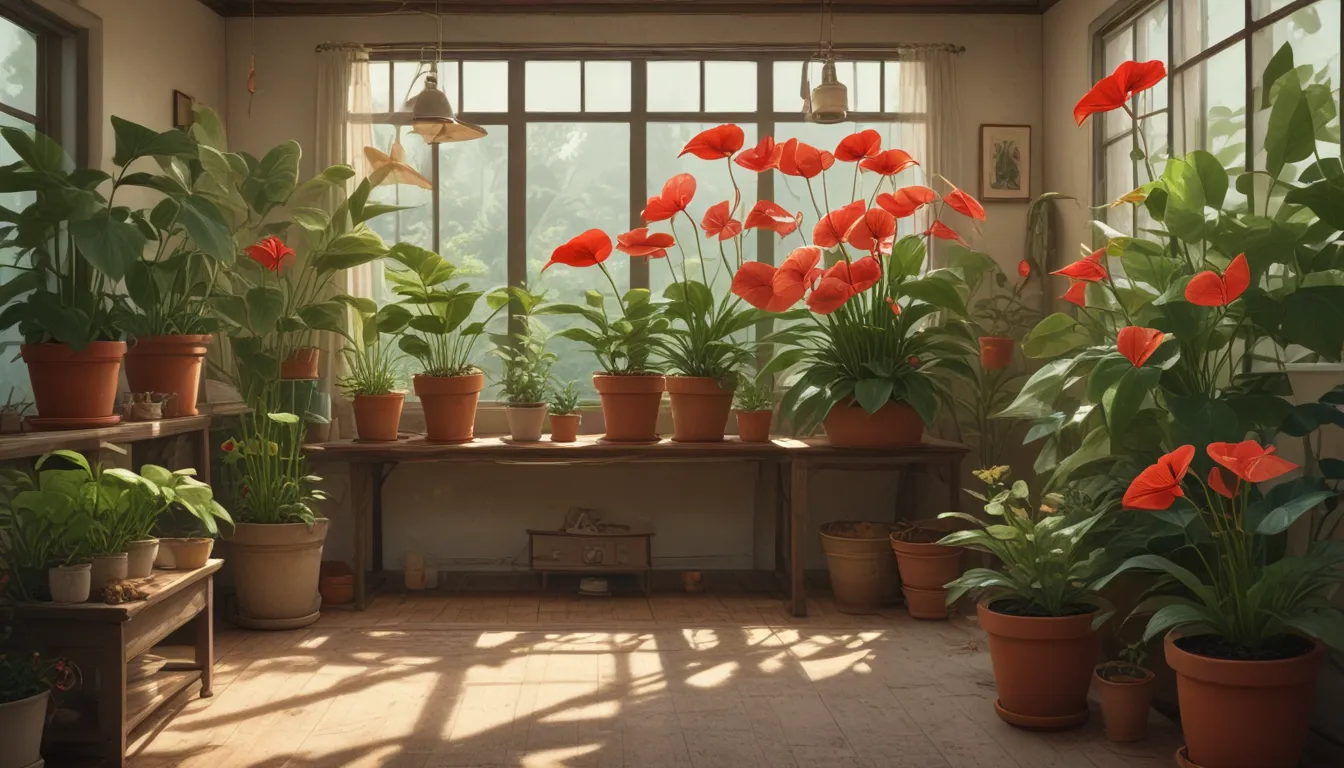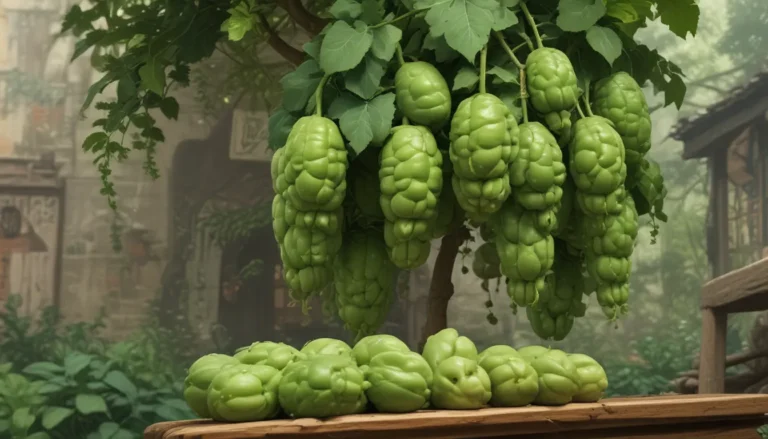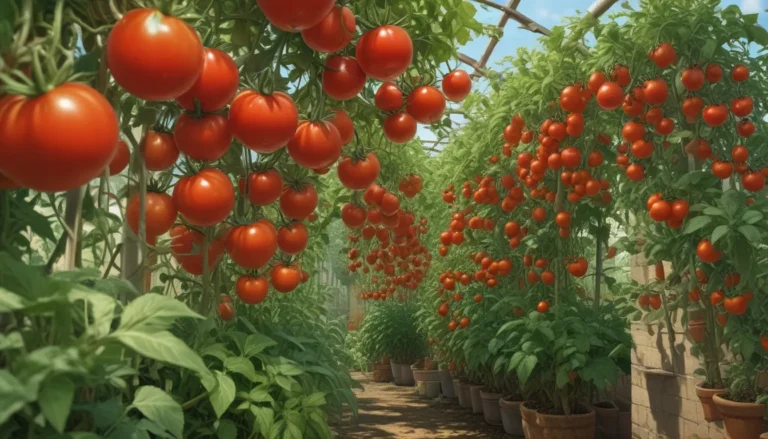Growing and Caring for Anthurium Houseplants: A Comprehensive Guide

Are you looking to add a pop of color to your indoor space with minimal effort? Look no further than the beautiful flamingo lily, a type of Anthurium plant. These vibrant houseplants are not only visually appealing but also relatively low-maintenance.
Anthuriums are a genus that includes around 825 species, with the A. andraeanum being a popular choice for indoor cultivation. With heart-shaped spathes in shades of red, magenta, orange, or yellow, these plants can brighten up your home without requiring excessive attention.
In this detailed guide, we’ll explore everything you need to know about growing and caring for Anthurium houseplants, from propagation to maintenance, varieties, and potential pests and diseases. So, let’s dive in and learn how to create a thriving environment for your Anthuriums.
What Is Anthurium?
Anthuriums are tropical plants native to regions of North and South America, with their origins primarily in Colombia and Ecuador. These epiphytic plants grow on the surface of other plants via aerial roots, belonging to the vast Araceae family.
One unique feature of Anthurium species is their modified leaf bracts, known as spathes, which add vibrant colors and serve a protective function. The spathes host tiny flowers on a fleshy stalk called a spadix, creating a visually striking display in various hues.
A few notable species include A. andraeanum, A. scherzerianum, A. clarinervium, A. crystallinum, and A. luxurians, each offering unique foliage characteristics. While these plants are colorfully appealing, it’s essential to note that they contain insoluble calcium oxalate, making them toxic if consumed by humans or pets.
Cultivation and History
Anthuriums have a rich history, with A. andraeanum being named after French botanist Edouard Andre, who discovered these plants during an expedition to Colombia in 1876. The species eventually made its way to the Hawaiian Islands in 1889, becoming a cherished element of local horticulture.
Today, Anthuriums are beloved by indoor gardeners worldwide, offering a touch of the tropics in any home setting. Whether you’re a novice or experienced gardener, these plants can thrive when provided with the right growing conditions.
Propagation
When it comes to propagating Anthuriums, gardeners can choose from various methods, including stem cuttings, divisions, or seed germination. Stem cuttings are a popular choice, involving rooting sections of stems in soil or water to create new plants.
Dividing a mature plant with developed roots is another quick way to obtain multiple plants from a single parent specimen. Seed germination is a slower process and requires meticulous attention to pollination for successful propagation.
How to Grow Anthurium Plants
To ensure the healthy growth of Anthurium plants, proper soil, lighting, and watering practices are essential. These air plants thrive in a well-draining growing medium that contains components like peat moss, pine bark, and perlite.
Choosing a container with drainage holes and providing bright but indirect light is crucial for vibrant spathes and foliage. Maintaining optimal temperature and humidity levels, along with regular misting and humidity trays, can create a favorable environment for Anthuriums to flourish.
Growing Tips
- Provide plenty of bright, indirect light for optimal growth.
- Avoid overwatering to prevent root rot.
- Protect plants from extreme temperatures and drafts.
- Dust leaves regularly to ensure proper photosynthesis.
Pruning and Maintenance
Anthuriums require minimal maintenance, with occasional pruning of dried spathes and unhealthy stems. Using a high-phosphorous fertilizer at reduced strength can promote flowering, while regular dusting of leaves with a dry cloth prevents dust buildup.
Monitoring root health and repotting when necessary ensures optimal growth without root binding. Following proper maintenance practices can help prevent common issues like leaf blight and root rot, preserving the health and vitality of your Anthurium plants.
Varieties to Select
Whether you prefer colorful spathes or striking foliage, Anthurium plants offer a wide range of options for indoor cultivation. Popular varieties like A. andreanum in red, A. clarinervium with contrasting veins, and A. luxurians with dark green leaves provide diverse choices for houseplant enthusiasts.
Specialty vendors offer unique foliage-focused varieties, while colorful cultivars like Purple, Tickled Pink, and White Heart add vibrancy to home decor settings. Exploring different Anthurium species can help you create a versatile indoor garden with visually appealing plants.
Managing Pests and Disease
While Anthuriums are relatively pest and disease-resistant, occasional issues like mealybugs, scale, spider mites, and whiteflies may occur. Regular inspection and prompt treatment with natural or commercial solutions can help prevent widespread infestations and maintain plant health.
Identifying common diseases like leaf blight and root rot early on is crucial for effective management. Proper watering practices, adequate ventilation, and minimizing humidity can reduce the risk of fungal diseases and root-related issues, preserving the longevity of your Anthurium plants.
Quick Reference Growing Guide
- Plant Type: Tropical herbaceous perennial
- Flower/Foliage Color: Burgundy, gold, green, purple, red, variegated, yellow, white (leaf bracts) / green
- Hardiness (USDA Zone): 10-13 (outdoors)
- Soil Type: Combination cactus and orchid mix
- Exposure: Medium to high indirect light
- Soil pH: 5.0-6.5
- Water Needs: Moderate
Indoor Anthurium Enthusiasm
Growing Anthurium plants can be a rewarding experience for both novice and seasoned gardeners, offering a colorful and low-maintenance addition to indoor spaces. By following proper care guidelines and identifying potential pests and diseases early on, you can create a thriving environment for these tropical beauties.
Whether you’re a passionate Anthurium collector or just starting your indoor gardening journey, the allure of these vibrant houseplants is undeniable. Share your experiences, questions, and tips for growing Anthuriums in the comments below, and let’s continue to cultivate a vibrant indoor garden together!





